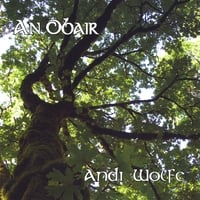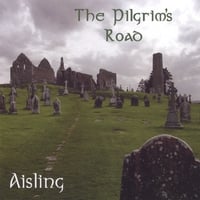 Central Train Station was just a 10 minute walk from my hotel and I had received information from several of the systematists at the herbarium that I could take a train to a southern suburb and then ferry across to a town that's on the edge of the park. It would mean a lot of walking to get to a trailhead and such, but that seemed to be a good option for avoiding a car rental.
Central Train Station was just a 10 minute walk from my hotel and I had received information from several of the systematists at the herbarium that I could take a train to a southern suburb and then ferry across to a town that's on the edge of the park. It would mean a lot of walking to get to a trailhead and such, but that seemed to be a good option for avoiding a car rental.So, off I went to Central Station.
 It's a large train station with about 26 platforms. Why is it that Europe and so many other countries can come up with a decent rail system and my home country can't figure out what a great way this is to get around? Our eastern seaboard is probably the best organized for this kind of commuting. It's so easy to get around by train in Sydney and surrounds that the morning suburb route is codominated by workers going into Sydney and small children commuting to school.
It's a large train station with about 26 platforms. Why is it that Europe and so many other countries can come up with a decent rail system and my home country can't figure out what a great way this is to get around? Our eastern seaboard is probably the best organized for this kind of commuting. It's so easy to get around by train in Sydney and surrounds that the morning suburb route is codominated by workers going into Sydney and small children commuting to school.
My destination was Cronulla, near the end of the line for this particular train. From this station I could walk a couple of blocks to a ferry station that would take me across the bay to Bundeena.
 I had a schedule in hand and a map to help me know where I was. It was hard to hear the conductor announcements so you have to pay attention to the names of the stops as you pull into each station.
I had a schedule in hand and a map to help me know where I was. It was hard to hear the conductor announcements so you have to pay attention to the names of the stops as you pull into each station.I spent a lot of time watching the scenery go by. Sydney has it's fair share of graffiti on walls and buildings. I also saw a few birds as we zoomed by: laughing kookaburra and white-faced heron were easy to spot.

Cronulla is a very small town. This is a view of the area around the train station.

Looks like a happening place on a Friday night, perhaps?

The harbor is full of pleasure craft. It's a scenic little town.

Here's the Ferry station. The ferry runs once an hour or so.

It's brightly colored - you can't miss it coming. The fare was something like AU$5 each way. It takes about half an hour to do the crossing.

The water was beautiful and I enjoyed the trip from the front of the ferry out in the open air.

I thought I might see some new birds out on the water, but I only saw ones previously spotted. Here's a silver gull in flight. It's kind of hard to get good photos of birds when the boat is moving so much.

Here's a little pied cormorant zipping along just above the water.

Bundeena is a small, quiet town nestled in at the border of Royal National Park. It must be a long commute to drive around the bay to get to the more developed areas south of Sydney. I'm pretty sure there isn't a car ferry running back and forth to this dock.

I scored my first new bird of the day at the dock, though. This is a Crested Tern.
From the ferry dock I walked through Bundeena to an access point for Jibbon Beach. From there I followed a trail into the park.

I'm glad I saw this washed up on the beach instead of encountering it in the water. This is a blue bottle jellyfish, which has a very nasty sting if you encounter it in while swimming.

I walked the Jibbon Loop Track, but instead of doing a loop I walked along the coastline and caught the Coast Track back to Bundeena. I never did see the aboriginal engravings. I was at the right spot, but they weren't very apparent.

The rock is sandstone throughout the region. There are some beautiful erosion features in the rock and the waves undercut the cliffs quite a bit. You don't realize how much they're undercut until you see where you've been walking from another vantage point.

This is a Pied Cormorant, slightly larger than the little pied cormorant and with a bold face pattern of brightly colored skin near the bill. The other distinguishing field mark is the black streak from wing to leg.

I thought I had seen one of these up in Brisbane, but after seeing this individual, I changed my mind and scored this as a new life bird.

Sometimes I wonder if it's just me or does everyone respond to rock and ocean the way I do? There's something very restful to my soul when I'm near this combination of elements.

Hmmmmmm, I was just over there a minute or so ago. That looks a little more precarious from this view than it does from standing on the edge looking over.

The cormorants are out on the rock to the right.

It was great to see all the different species of Banksia along the coastline. Banksia is in Proteaceae, a plant family I've come to love in South Africa.

Here's another species of Banksia.

Australian Raven. There was a pair out on the rocks picking up something. They kept me company for an hour or more as I walked the trail.

Ravens have a distinctive throat ruff, which makes an easily spotted field mark.

I took a short rest break at this spot. The ocean was beautiful and I enjoyed watching the waves break against the rocks.

The wave action didn't bother this flock of crested terns. Some of those waves were huge! The one in this picture is about a third the size of the larger ones.

All that wave action erodes the sandstone. Some of the erosion patterns are pure eye candy.

More Banksia inflorescences.

Some woodturners really like to work with the Banksia seed pods. Here's one producing fruits on the pod.

I would have liked to have gone into the water here.

It was quiet and I enjoyed the solitude. I saw just a handful of people out here while I was walking.

This part of Royal National Park suffered a huge fire in the mid 1990's. The vegetation is recovering nicely, but I understand from talking to people who know the park that much of the affected wildlife hasn't recovered as well.

There are a few signs posted around the park warning you to not stand too close to the edge because of the wave erosion of the cliffs. It's really hard to know that you're not on solid rock when you're on top of these cliffs. When I see something like this I immediately think of Wiley E. Coyote and his attempts to catch the Roadrunner. He was always breaking off overhanging sections of cliffs.

This shy bird is a Little Wattlebird. I saw quite a few of them on my walk, but they're not easy to photograph. I was lucky to capture this view. It was watching me, too.

This was the most common and visible bird out there during my walk - a New Holland Honeyeater. I enjoyed watching it's antics. It would leap up in the air to catch an insect and return to its perch. Pairs of them chased each other all around the heath as well.

In South Africa this kind of vegetation is called "fynbos." Here they call it a heathland. I didn't see any flowers of Ericas or their relatives, but the name "heathland" refers to Ericaceae in my mind.

There was plenty of Proteaceae represented, though.

Ah - this is the information I would have liked to have had on the other end of the trail. Oh well.

I had been out for about 5 or so hours by the time I finished my walk and I still had to walk through Bundeena (up a large hill and over to the coast) before catching the ferry. My pedometer indicated I had done about 7 miles altogether - not a bad walk in the bush.

It was nice to see the ferry coming - I was ready to find some refreshment. I hadn't really packed a lunch or enough water, so I was looking forward to getting back to Cronulla where I could find some coffee and a snack.

A train ride back to Central station and I arrived back to my hotel at around supper time. This is the corner where my hotel is located.

Take a closer look at the nearby businesses and you can see why I said that this isn't the nicest of neighborhoods. The hotel itself was fine and I didn't feel uncomfortable walking in this area, but it's certainly not the nicest part of Sydney.











No comments:
Post a Comment